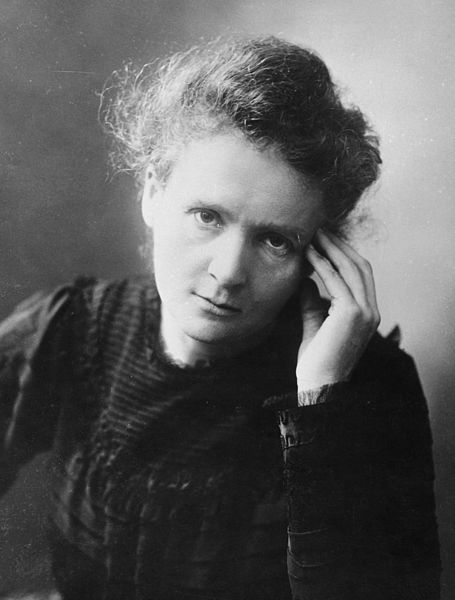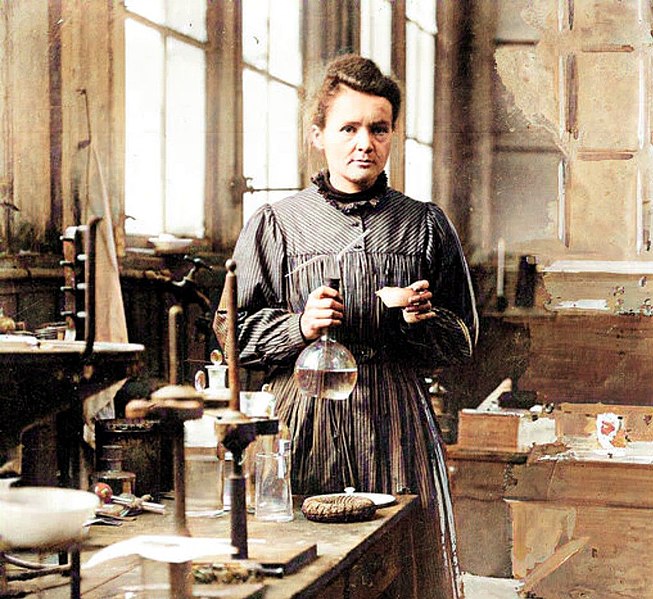When Albert Einstein said that “Marie Curie is, of all celebrated beings, the only one whom fame has not corrupted”, he was absolutely right.
She was, in fact, one of the first female scientists who attained global fame in a male-dominated world with her scientific achievements.
She was also the first woman scientist who gets a Doctor In Science degree from the Sorbonne University in June 1903 that paved the way for the entry of women in the scientific field.
Early Childhood
Maria Salomea Skłodowska was born on November 7, 1867, in a well-educated family in Warsaw. The city is now one of the largest cities in Poland, but it was under foreign subjugation during those days.
She was an intelligent child from the beginning. She exhibits an excellent memory much of which is attributed to her parents.
While her mother was a headmistress in a school, her father was a professor of physics and maths.
As the youngest child, she was always the beloved one who likes to learn something even while playing!
Education
She joined the Freta Street School, but soon get enrolled in another private school which was a little close to her home. At the age of 9, she lost both her mother and sister.
She went into a deep state of sorrow. Her father instead of understanding her situation, get her enrolled at a government-run gymnasium that was notorious for its poor teaching at that time and even the use of polish language was prohibited there.
After five years in 1883, she earned graduation from school and start working as a governess to support her family.
At the same time, she continued her informal training in a laboratory in Warsaw. However, she managed to went to Paris in 1891 by using the name Marie instead of Maria Salomea Skłodowska and joined the prestigious Sorbonne University.
She studied physical science amid all the hardships and rank first on the licentiate list in 1893 and returned to Warsaw. However, soon she found that none of the universities in Warsaw are keen to employ female graduates.
So, she returned back to Paris to study mathematics at the Sorbonne University and eventually ranked second in mathematical sciences in 1894.
Next year, she gets married to a French physicist Pierre Curie who was working as a junior lecturer at the Sorbonne University and also successfully submitted her doctoral thesis.
Work
In most cases, marriage means an end of professional life in those days, but not for Marie Curie! Her marriage marked the beginning of a partnership that started to bore fruits.
She discovered polonium and radium in 1898. Around that time, she was already the mother of one-year-old Irène, and the work pressure was enormous.
In 1903, she received her first Nobel prize for Physics for the discovery of radioactivity, and since then, there was no looking back!
Next year, she gave birth to another child Eve, but this time too, her scientific work was not interrupted.
She joined the École Normale Supérieure For Girls in Sèvres as a lecturer in physics in 1900.
After working there for long three years, she joined the laboratory directed by her husband Pierre Curie as a chief assistant in 1904, but become a professor at the Sorbonne University after her husband’s tragic death in 1906.
She continued her work and was awarded her second Nobel prize for chemistry in 1911.
Throughout the first World War, she worked relentlessly with her daughter Irene for the development of X-RADIOGRAPHY to treat wounded soldiers.
She was presented one gram of radium by the then US President Warren G. Harding in 1921. The very next year, she becomes a member of the Academy of Medicine.
She starts giving lecturers in various countries including, Belgium, Brazil, Czechoslovakia, and Spain. Her greatest contribution is her scientific work that ultimately led to the development of nuclear energy and cancer treatment.
Awards
Although Marie Curie won loads of accolades and respect for her work, some of the notable awards or medals are as follows:
- 1903-Nobel Prize in Physics
- 1911-Nobel Prize in Chemistry
- 1921-John Scott Legacy Medal and Premium
- 1904-Matteucci Medal
- 1903-Davy Medal
- 1909-Elliott Cresson Medal
- 1921-Willard Gibbs Award
- 1921-Benjamin Franklin Medal
Marie Curie died on 4 July 1934 in France due to leukemia which was caused because of her long exposure to radiation.
However, even her death could not bring an end to her contribution to physics as she continues to exert a profound influence on generations of physicists and chemists.
References
https://www.tandfonline.com/doi/pdf/10.1080/028418699432509


